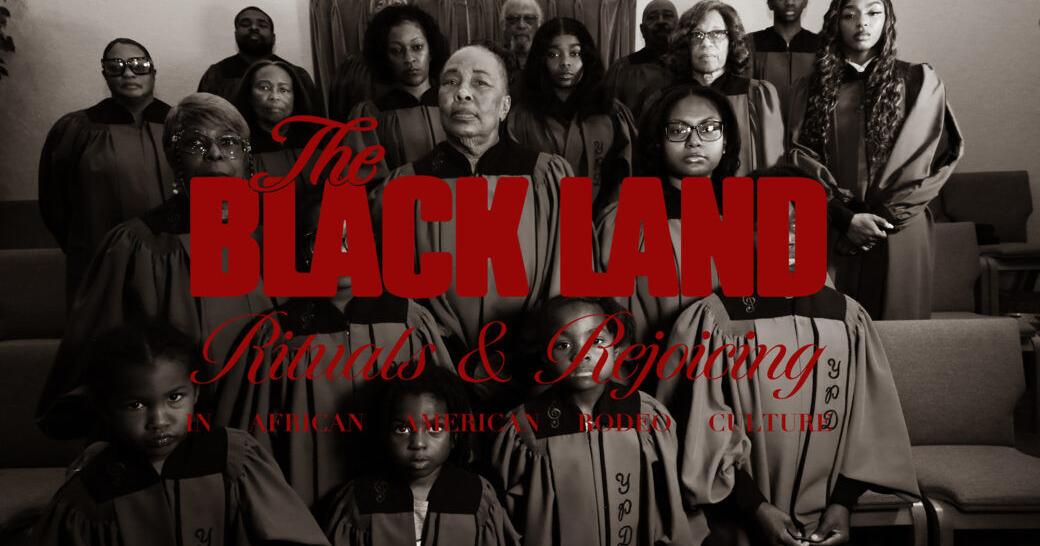Celebrating Black Equestrian Heritage: Jakian Parks’ “The Black Land” Exhibit
A New Lens on Western Culture
Photographer Jakian Parks’ exhibit, “The Black Land: Rituals and Rejoicing in African American Rodeo Culture,” shines a spotlight on the rich tapestry of Black equestrian heritage. Through documentary photography, Parks captures generations of Black cowboys and cowgirls, offering a contemporary perspective on a lifestyle deeply rooted in history. As Parks states, the exhibit is designed to “bring out the Western, the Cowboys lifestyle out to a contemporary look of life,” challenging conventional images of Western culture that often overlook the diversity within these communities.
Personal Roots in Rodeo Culture
Parks, who hails from Oklahoma, finds his inspiration deeply intertwined with his family history. Introduced to Black rodeo culture by his late aunt, Shay Nolan, he has transformed his personal experiences into an artistic commitment. His work extends beyond photography; it seeks to document and honor Black agricultural practices and the equestrian history that many may not be aware of.
“The reflection is basically a reflection of who we are and where we came from,” Parks explains. The title of the exhibit, “The Black Land,” encapsulates the pride felt by Black Americans and acknowledges their contributions to the very foundations of the United States.
Breaking Stereotypes
One of the unique aspects of this exhibition is its rejection of stereotypical depictions of Western culture. By featuring predominantly younger participants, Parks challenges the narrative about who is involved in cowboy culture. This approach opens up a dialogue about representation and highlights the ongoing evolution of Black rodeo culture.
Seaira Hull, an architecture student collaborating with Parks on the exhibition, emphasizes the importance of this new vision: “It’s really important that Jakian has been called to this vision and to encapsulate where the Oklahoma cowboy life is headed.” Hull also notes the historical significance of Black communities in Oklahoma, where there were once 50 Black towns, a testament to a vibrant past that many people have forgotten.
Community and Cultural Identity
Working closely with organizations like the Oklahoma Cowboys, Parks aims to explore deep questions of identity and cultural meaning. Hull articulates how this partnership has led to personal growth: “When you work with him, speak with him, you grow. I would say it’s ignited an essence of curating for meaning and not just to create.”
The exhibition doesn’t just focus on rodeo; it examines the cultural healing that exists within Black communities. Through ritualistic practices that merge African and Christian traditions, Parks presents a narrative that celebrates resilience and continuity.
A Graceful Challenge to Historical Narratives
Parks’ photographs embody what the exhibition materials describe as “a quiet grace that redefines historical narratives.” This is particularly significant when considering the ways in which Black bodies have historically been portrayed in the arts and media. Parks asserts that the Western lifestyle often appears one-dimensional; however, his work aims to broaden this perspective.
The subjects captured in Parks’ images possess full agency, moving away from themes of invisibility, exploitation, or exclusion. Instead, his work highlights a return to inherited land and a reclamation of independence, encouraging viewers to recognize the strength and vibrancy of Black cowboy culture.
Honoring African American Identity
Guest curator Flowers, a writer and educator from Houston, aligns with Parks’ vision and enriches the exhibit’s narrative by exploring intersections of visual culture, cultural history, and critical race theory. Her work on projects that document intergenerational knowledge within the African American community complements Parks’ themes, creating a layered discourse around identity.
Parks’ documentary approach offers what the exhibition terms “a visual lexicon that honors African American identity through an intimate, community-driven lens.” His exploration goes beyond mere imagery to elevate underrepresented narratives and capture often-ignored aspects of Black life in America.
Exhibition Details
“The Black Land” opened on November 6 and will be on view through June 1, 2026, in Oklahoma City. Visitors can explore this thought-provoking exhibit at 11 NW 11th St., Oklahoma City.
The exhibition invites viewers to rethink the complex layers of American rodeo culture and recognize the profound influence and contributions of Black communities throughout history.



